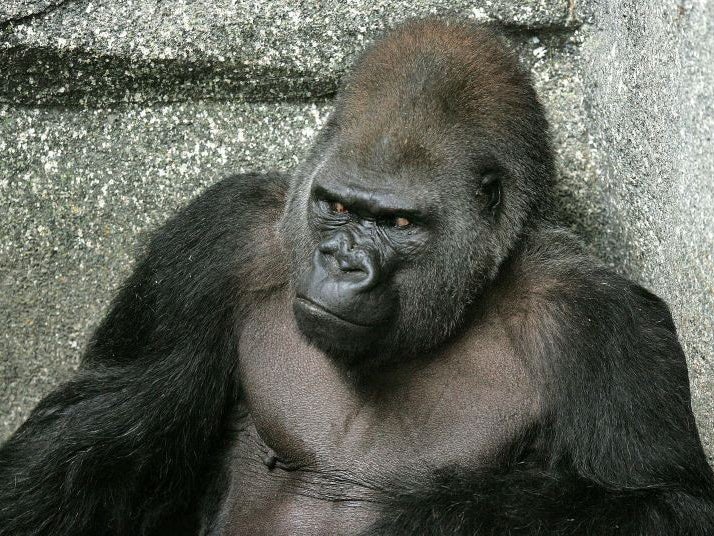Zoos filling up with geriatric animals as medical advances extend life expectancy
Vets are debating whether caged animals should be kept alive longer than in the wild – or be allowed to die

He is one of Blackpool Zoo’s best-loved residents, famed for his sexual appetite as much as his gentle demeanour. And at 94 years of age, Darwin is proving there’s plenty of life left in the old tortoise yet.
But the creature’s longevity is not welcome news for everyone. Darwin is one of a growing breed of geriatric zoo and aquarium animals that are beginning to fill up UK attractions after significant advances in medicine, diagnosis and care have extended their life expectancy.
Illnesses such as cancer, arthritis, osteoporosis and kidney failure, long associated with ageing human beings but rarely detected in animals, are cropping up in zoos with increasing frequency. This is because animals have typically not lived long enough before for these symptoms to afflict them.
But alongside cases such as Darwin and Kate, Blackpool Zoo’s 48-year old Asian elephant – both full of life with no major ailments – age-related problems are emerging among the residents of zoos and aquariums up and down the country.
“Early in the 20th century zoos were having trouble keeping animals alive. We didn’t understand how to look after them properly, we didn’t know what they ate and we didn’t know how to keep them,” said Dr Mark Stidworthy, president of the British Veterinary Zoological Society (BVZS).
“These days the animals are living so long that we are seeing problems with bones and joints, heart disease, kidney disease and cancer. The question now is how much veterinary intervention is appropriate in zoos?”
Ageing animals have become the hot topic in zoology circles, as vets debate whether caged animals should be kept alive longer than they would in the wild – or be allowed to die. The issue will be debated at the annual BVZS spring scientific meeting at the Chester Racecourse this weekend.
“It is certainly true that cost is a significant issue. These kind of ‘interventions’ are expensive and are becoming more so as veterinary procedures become more sophisticated,” said Dr Stidworthy, a veterinary pathologist for zoo and aquarium species.
Over the past 40 years zoo medicine has gone from being an obscure branch of veterinary medicine to being a mainstream component, with zoos having their own in-house teams.
The issue of ageing zoo animals is not confined to the UK. Geriatric animals are making up a larger portion of US zoos – for example at Brookfield Zoo in Chicago, where Ramar the gorilla, now 47, is on drugs for his arthritis.
Dr Kirsten Pullen, chief executive of the British and Irish Association of Zoos and Aquariums, has also noticed a significant increase in ageing – and diseased – animals.
“It’s definitely an issue. We get more arthritis, some diabetes, things like liver and kidney failure. It’s similar to human beings. But we must not go down the route of veterinary intervention simply because we can. We are absolutely careful of not just keeping the animals alive for the sake of keeping them alive. We need to be very aware of the impact on the welfare of the animal,” she said.
If the animal in question plays an important role in the social stability of its group or is key to its breeding programme that could also help determine whether to prolong its life, Dr Pullen added.
“A lot of vets dealing with domestic situations are very concerned about the lengths people go to to keep their pets alive because they don’t want to be without them. And zoos need to be aware of the same position – relationships build up between animals and keepers, but you need to keep an assessment of the welfare of the animal,” she said.
Cost and ethical considerations aside, there are plenty of obvious advantages to prolonging the life of animals through improved medication – not just for them but for regulars at the zoo.
“People go to see particular animals – they build a relationship with them over time. You’ll find people popping in to see the tiger they’ve built a relationship with, they always come to see that tiger. Or the penguin they’ve noticed on several occasions.
“We’ve had a lot of people who have become really attached to individuals as they spend time in the zoo,” Dr Pullen said.
Subscribe to Independent Premium to bookmark this article
Want to bookmark your favourite articles and stories to read or reference later? Start your Independent Premium subscription today.

Join our commenting forum
Join thought-provoking conversations, follow other Independent readers and see their replies